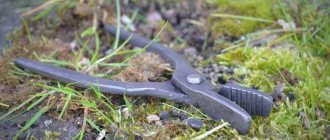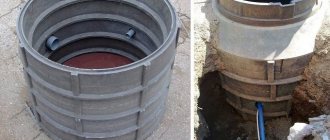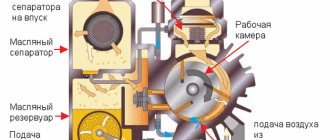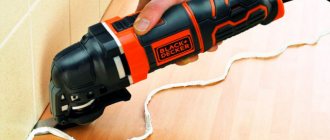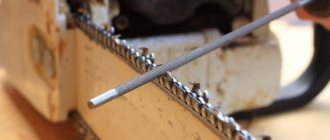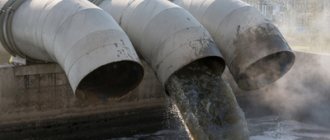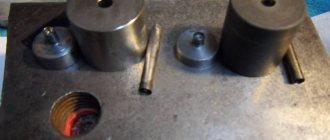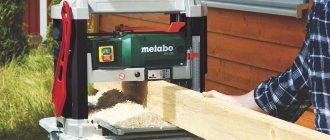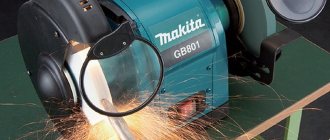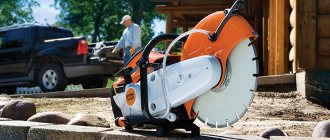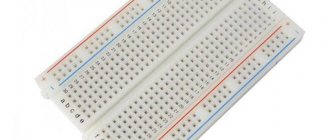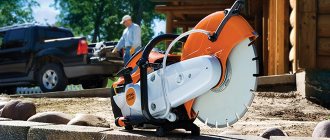Definition
Pressing devices consist of a container that contains a punch, a matrix, needles and other components. What is this - a punch? It plays an important role in the stamping or marking process and is one of the main elements of the pressing device. The purpose of the punch is to apply pressure to the metal part to highlight certain characters or holes on it. Also, using this equipment, you can extrude the required part, apply standard or mirror markings and stamp the required number of elements.
Partner
An equally important detail when stamping products is the matrix. It is a box into which the punch must fit. The matrix is directly involved in the process of forming on the surface of the workpiece. In direct stamping press equipment, the die is the chamber into which the press material is loaded. The lower part of the box forms an image on the part, and a punch is directed onto the contents from above. Depending on the complexity of the part being manufactured, there are solid and composite matrices.
What materials are punches and dies made of?
The matrix is the basis of this device and is always presented only in metal, like (punch materials), however, their varieties vary depending on the temperature during the pressure process. After all, with hot pressing the indicators are very high. It is this nuance that dictates what the equipment should be made of so as not to melt or deform.
- When carrying out cold processes, high-strength steel is used that can withstand incandescence levels up to 54-65 HRC. It can be replaced by material of the 6ХВ2С brand. Their main characteristics are high strength, resistance to damage and anti-corrosion properties. The use of legalized steel is strictly prohibited, as they become more brittle when exposed to high temperatures and lose their wear resistance.
- Hot processes involve working at very high temperatures. In this case, the steel of the punch parts should not be subject to deformation during stamping. Therefore, materials are used with increased wear resistance.
- Progress is moving forward and new materials, such as polyurethane, are already widely used in production. It has not only resistance to deformation, but also elastic properties combined with high hardness up to 98 units. according to Shore after hardening, which makes it a unique raw material.
- The matrix can also be made of rubber, among other materials.
How does the press work?
During operation, the punch (we discussed what it is at the beginning of the article), by applying pressure on a special washer, acts on a metal part, which in turn passes through the matrix. Thus, the required shape is prepared. During operation, parts of pressing equipment are subjected to enormous pressure, reaching up to 500 kg per 1 square meter. mm. They also constantly heat up to levels above 200 degrees. Due to this, stamping and press parts wear out. And due to the additional impact of the processed products, punches and dies lose hardness over time. Therefore, their durability depends on the material from which they are made.
Double plate molds
The simplest and at the same time the most common type of mold is the cold runner mold with two platens.
The figure shows a mold with a central sprue channel that ensures the passage of molten material from the injection unit to the parting sprue running along the parting line. From the spreading sprue, the melt flows directly into the molding cavity. In the simplest case, there may be no spreading sprue in the mold, and the material from the sprue bushing may be fed directly into the cavity. Products produced on such molds can be easily identified by a large round cut - a trace of trimming the “carrot” of the sprue, usually located in the very center of the part.
The presented mold has one flat parting line that opens at each casting cycle to remove the product and remove the sprue. Removal of the product and separation of the sprues is ensured by the mold's push system, consisting of a pusher plate, a shank plate and a number of individual pushers. Pushers come in various shapes, but the most common are cylindrical. Round marks from them can be seen on the inner surface of most plastic parts.
The working parts of the mold - the punch, the matrix and various inserts, also called "marks", determine the configuration of the part being cast. The parts of the mold that make up its frame are called load-bearing or support plates. Despite the fact that these plates must withstand cyclic loads of hundreds and sometimes thousands of tons, they are made of a softer metal compared to the working parts of the mold. This allows you to reduce the cost of the mold and simplify its production.
An important element of the mold design is its heat exchanger. Essentially, a heat exchanger is a set of round holes of complex configuration that penetrate the plates and working parts of the mold. Water passed through these channels ensures rapid and uniform cooling of the part in the mold cavity.
Making punches
In the production of punches, high-precision machines with program control are used. Initially, milling machines are used, which mechanically produce and process workpieces. Then they are polished and then, using metalworking equipment, the working contour of the stamp is applied to the surface. After the punch is made, it is placed in a special furnace for hardening.
The punches produced can be cylindrical or shaped, the production of which is subject to a longer and more complex process. Punches containing letters or numbers are also produced. This is a steel piece with a square cross-section, having a sawn tip, on which the required sign is engraved. A punch of this shape is used to brand various numbers, metal parts, machine elements and other products.
The matrix, in turn, is made after the punch, using its impression. The container should be slightly larger in width and size. Therefore, the required gap between the parts is adjusted by independent processing.
Press equipment parts wear out quickly, so they should be replaced periodically. The lifespan of punches is influenced by die manufacturing methods and production area. The average lifespan of press components is about 6 years.
Manufacturing Basics
To make punches to order, the first step is to prepare a workpiece. After this, the object is polished and hardened. If necessary, the profile is sharpened to suitable values. The easiest way to make a cylindrical punch. The ease of the process lies in the fact that the workpiece can be pre-processed, which significantly speeds up the entire process.
Using metal-cutting equipment, the contour of the spare part is processed, and on its basis an impression is made, according to which the master performs the remaining work: hardening, processing. If you need to make a complex contour, you will have to use several types of equipment. For example, to produce products with a flange, you will need to use a milling machine, and for a punch with shoulders, you will need to use planing machine equipment.
Hardening is carried out at a temperature of 7800C. It is important to adhere to established norms and rules, otherwise the surface of the workpiece may be subject to deformation. Numbers or letters can be applied to the product in direct or mirror image, depending on customer requirements. The production of punches with complex contours is carried out on a coordinate drilling machine. At the end of all technological processes, the product is polished.
What are punches made of?
An important requirement for dies and punches is the competent choice of the material from which they will be produced. The worse the steel, the lower the productivity of the pressing equipment. Volumetric punches with complex shapes are made of high-chromium and high-carbon steel alloys. The most common material is steel marked X12F1. It has high wear resistance, excellent hardenability, and is not subject to significant deformation during operation. To produce simple types of dies, carbon tool steels U8A - U11A are used.
Parts made of heat-resistant metals retain their hardness during operation and do not lose their shape. In order to increase the durability of dies, materials from hard and high-speed alloys were introduced into production. The cutting edge is applied to the body of the die or die. The best results in the production of press parts were shown by alloys such as stalinite and stellite. They provide hardness to the elements without the need for hardening.
Punching of sheet parts
The operation of the press by punching is quite simple. In this case, one part of the material placed in the equipment is separated from the main one along a specific contour. The cutting process creates internal holes. The process of using stamps and punches for punching is reminiscent of cutting parts with scissors. In this case, the cutting components are the matrix and the punch, which have sharp edges.
The drawing of the punch clearly shows how the metal is pressed into the lower part of the matrix, followed by bending and deformation of the material. Towards the end of the work, reaching maximum pressure, the metal fibers break and a corresponding cut is made on the product.
In the article we looked at what equipment such as a punch is made of, what it is and where it is used. With their help, coins, medals, badges, seals, textured designs, medicines and many other products are minted.
§ 9. Main details of molds
Section: LIBRARY OF TECHNICAL LITERATURE Short path https://bibt.ruBook contents Forward Back
Mold parts are divided into two main groups: parts for technological purposes that are in direct contact with the plastic, and therefore participate in giving the product the desired shape; these parts include the matrix, punch, inserts, signs; details for structural purposes that do not directly design the product, but ensure the operation of the first group; These parts include guide columns, base plates, pushers, handles, etc.
Matrices and clips. The matrix is the main part directly involved in the design of the outer surface of the product. The shape, dimensions and design of the matrix are determined by the design of the product itself. In direct compression molds, the lower part of the matrix serves to design the product and is the matrix itself, and the upper part is intended for loading press material and is a loading chamber.
Manufacturing solid matrices (Fig. 127, a) is not always advisable. To facilitate the manufacture of matrices, they are often made composite (Fig. 127, b); in this case, the connection of the matrix itself with the loading chamber is carried out in such a way that during pressing the possibility of pressing material getting into the gap between them is completely excluded. Getting into the gaps under high pressure, the press material gradually loosens the connection and disables the mold.
Rice. 127. Matrix designs: a - solid, b, c, d - prefabricated
In multi-cavity molds, insert cylindrical matrices are used, pressed into a holder (Fig. 127, c). A clip is a part intended for fastening the design elements included in a prefabricated structure. Most often, clips are used to connect parts of prefabricated design nests.
Despite the wide variety of fastened parts, the clips are characterized by simplicity of design.
Typically these are round or rectangular parts. The holder does not directly participate in the molding of the product, however, it experiences heavy loads during pressing, and therefore is one of the most critical parts.
For pressing large-sized products (even of a simple shape), the matrices are made assemblies from several parts of a simple shape (Fig. 127, d).
Rice. 128. Designs of punches: a - solid, b, c - prefabricated
Punches. The punch is the main part of the mold, forming the upper part and inner surface of the product. In a direct compression mold, the punch transfers the pressure of the press to the plastic.
In small molds, solid punches are used (Fig. 128, a), however, this causes increased consumption of tool steel and therefore composite (prefabricated) punches are more often used (Fig. 128, b and c).
Rice. 129. Injection mold with insert 1, threaded mark 2 and threaded ring 3
Inserts. When pressing products with complex profiles, the shape of the surfaces of the punch and matrix can be complex and often inconvenient for machining on machines. The use of liners facilitates the production and repair of punches and dies with complex profiles. Inserts 1 (Fig. 129) are parts installed in a punch or in a matrix to form recesses or holes of various shapes in the product. The liners are installed either stationary or so that they can be removed with each pressing.
Threaded marks and rings. Threads on plastic products are made by pressing with threaded marks or threaded rings. The internal thread is formed with a threaded mark 2. The threaded marks are installed in the mold before pressing, removed together with the product and unscrewed on a device from the threaded holes formed by them. The external thread is formed by a threaded ring 8. The ring, as a rule, is unscrewed from the pressed product after removing it from the mold.
Book contents Forward Back
Skip to navigation
